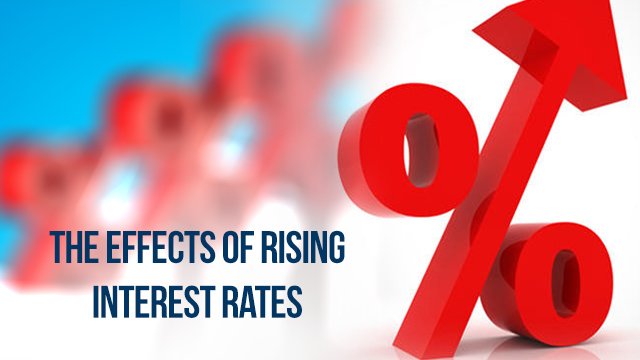When Interest Rates Go Up

The signalling and effect of interest rate changes is interesting. An action to tighten interest rates should, on a direct financial basis, reduce the price of bonds and equities however the rate hike is signalling that the economy needs tightening so conversely implies improved outcomes of firms justifying higher equity prices. That logic appears perverse but dominating. More perversely, the US December 2017 rate hike was met with bond buying……possibly market manipulation and, maybe, in time the bonds market will revert.
Does the economy need tightening? Well, in simplistic terms, the US economy is nominally growing, unemployment is low and inflation is low. Arguably the growth is only sustained by increasing levels of national debt – it is a bit like saying that I earned more this year because I borrowed more. Of course, debt accumulates and so grows the servicing costs. The increase in interest rates (from 1.25% to 1.5%) while nominally small as increasing the debt servicing burden by 20% which will need to be met by labour. In time, a combination of wages and labour force would need to increase to continue the servicing of the debt. While the rate change may not immediately trigger defaults it does lead to greater risk discrimination exposing some new debts to liquidity tightening and reducing new rates of investment.
Low interest rates lead to low inflation by reducing costs of financial capital and consequently other forms of capital including labour…. hence tepid demand. There is a strong debate if inflation is measured accurately meaning the real inflation may be much higher. This means that the true underlying economy when not pumped by the continual addition of debt, and with a more realistic view of inflation, would be currently contracting. This negative economic view fits in with the reduction in global shipping for trade.
Raising interest rates produces contradictory affects with different timing. Initially the signalling is optimistic, then economy is contracted and in the longer term apparently beneficial for labour and real wealth.